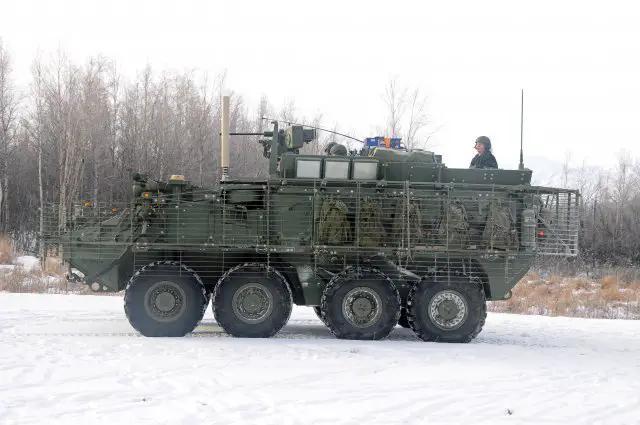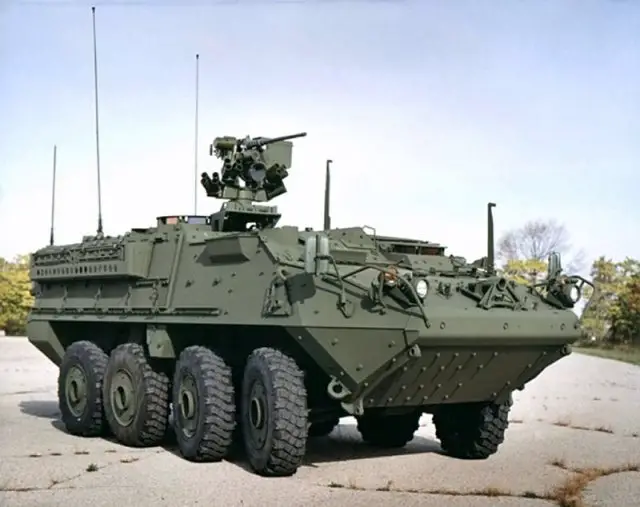|
|
|||
|
Defence & Security News - USA
|
|||
|
|
|||
|
U.S. Army Stryker vehicle completes tests in extreme cold conditions in Alaska
|
|||
|
Particularly suited for transporting infantry in urban environments, the Stryker has become popular among Soldiers in the most dangerous and rugged areas overseas, who describe the vehicle as quiet, reliable, and easy to maintain and repair. The vehicle's stellar performance is doubtless related to the extensive evaluation it has undergone at Yuma Proving Ground and its three subsidiary test centers since 2002. Earlier this year, a new variant of the vehicle wrapped up a winter of extreme use at U.S. Army Cold Regions Test Center.
|
|||
|
|
|||
 Earlier this year, a new variant of the Stryker wrapped up a winter of extreme use at U.S. Army Cold Regions Test Center. (Photo Credit: Mr. Mark Schauer (ATEC)) |
|||
|
|
|||
|
Boasting an upgraded chassis and drivetrain along with a variety of mechanical, electrical and digital improvements to enhance its performance, the latest Stryker variant was subjected to more than 3,000 miles driving across rugged terrain in extreme cold.
"It looks like a regular Stryker, but it isn't," said Richard Reiser, test officer. "It has a larger engine that significantly increases horsepower and torque. It has a much greater diagnostic capability that integrates sub-systems. This gives operators a greater awareness of vehicle health and potentially improves situational awareness during the actual mission in the vehicle." In the world's most frigid environments, cold starts can be harrowing even for the most rudimentary vehicles. For a complex system like the Stryker, every component's ability to function in extreme cold is crucially important, and was subjected to keen evaluation at CRTC in temperatures far below freezing. "Like automotive trends in general, we have much greater reliance on computer systems in these vehicles," said Reiser. "Those computer systems and sub-systems integrated into the hull depend on a great deal of computer software and hardware." Though a vehicle's performance characteristics are similar in cold weather once started and sufficiently warmed up, dramatic fluctuations in temperature can degrade performance of any number of a vehicle's components. "Stopping distance and acceleration shouldn't change profoundly in this environment," explained Reiser. "The real issues tend to be related to rapid temperature differentials. Each sub-zero temperature threshold tends to flush out small anomalies." The test was more than just endless driving. The performance of every special feature the vehicle boasts, from its communications suite to the central tire inflation system that adjusts tire pressure as the vehicle is in motion, was scrutinized in sub-tests across the winter. |
|||
|
|
|||
 The U.S. Army Striker Infantry Carrier Vehicle The U.S. Army Striker Infantry Carrier Vehicle |
|||
|
|
|||
|
"Cross country miles accumulate slowly in this environment," said Reiser. "We didn't have consistently cold weather, so we were able to move what sub-test activity we were doing based on its environmental relevance. If it is something that's not so much impacted by extreme cold, we moved that to the less-cold times."
The Stryker also lent itself to ingress and egress testing with the participation of Soldiers from Fort Wainwright's 25th Infantry Division who were assisting in a concurrent test. The Soldiers entered and exited all hatches of the vehicle wearing the full complement of armor and Arctic battle dress, ensuring everything in the vehicle could be touched and reached without snagging their bulky gear. The multi-month test was completed ahead of schedule and under budget, which Reiser attributes to the flexibility of the rugged, self-contained six-person crew. The drivers, for instance, were from CRTC's maintenance shop, and were able to troubleshoot and repair problems that cropped up without lengthy downtime at a maintenance shop many miles from the test range. |
|||














